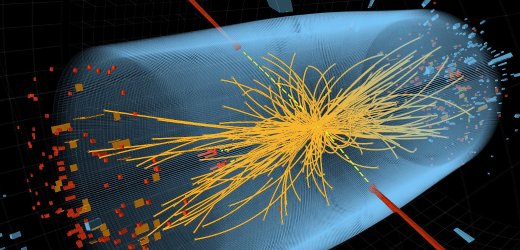Outsider Science is a New Kind of Folk Art

Outsider science is the scientific parallel of what is often called folk art, or outsider art. It’s an interesting thing that folk art has now become very popular and there are whole magazines devoted to it and galleries and collectors, but in the early 20th century it was very controversial.
One of the first people to write about it was Jean Dubuffet, the French artist who coined the term ‘Art Brut.’ Dubuffet tried to think through how could we take seriously the productions of outsider artists, many of whom were operating at the time in lunatic asylums. They weren’t going to be hung in the salons of Paris. They hadn’t studied at the academies, yet they were producing works of amazing aesthetic beauty and power. So Dubuffet began to try to think through how we could understand this.
It obviously has to be understood in different terms than the works that hang in the salons, but still it’s powerful. It’s moving. I feel the same way about this outsider physics. It’s not going to be taught at Harvard and Princeton. It shouldn’t be judged in terms of the Nobel Prize-winning terms, but I think it’s aesthetically and intellectually amazing. I also think it’s inspiring what a lot of these people do.
So how can we judge it? How can we value it? That’s really what I was trying to think through in my book, Physics on the Fringe. How do we, as it were, admire and value what I do think is a form of folk science? And one of the things that I say in my book that I think is quite controversial is that one of the functions of science and particularly of theoretical physics is actually to offer a story about the world. Physics does give us microchips and lasers and men on the moon and all that’s wonderful. All that instrumental stuff is great, but there has always been another function of theoretical physics, which is to tell us the story about our world and where we as human beings fit in a wider cosmological scheme.
I think what these outsiders are doing is giving us often crazy, bizarre, but amazing stories about the way the world could be. And there is a sense in which I think theoretical physics, particularly in our time with string theory and hyperspace theories and parallel universe conceptions, has become a kind of imaginative, speculative form of storytelling and this is the way I think we can appreciate these people.
They too are doing a kind of imaginative, speculative storytelling. If I pick up a copy of New Science magazine, almost every week New Science is promoting a new theory of reality. They can’t all be right because we can’t have a new theory of reality every week. But I just love reading this stuff. It’s literally science fiction. And those of us who love science ought to fess up to the fact that what we love about this is it’s good imaginative brain teasing. And on that level we can enjoy what these people do. What we do with their claim to truth is another story.
In Their Own Words is recorded by experts in Big Think’s studio.
Image courtesy of Shutterstock.





